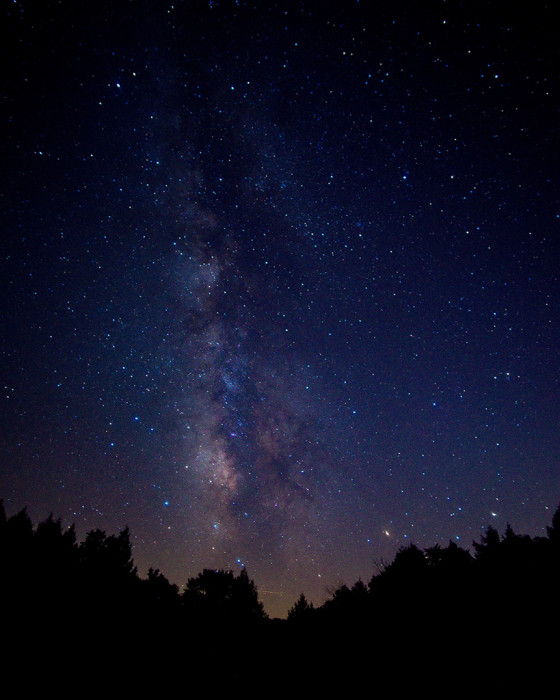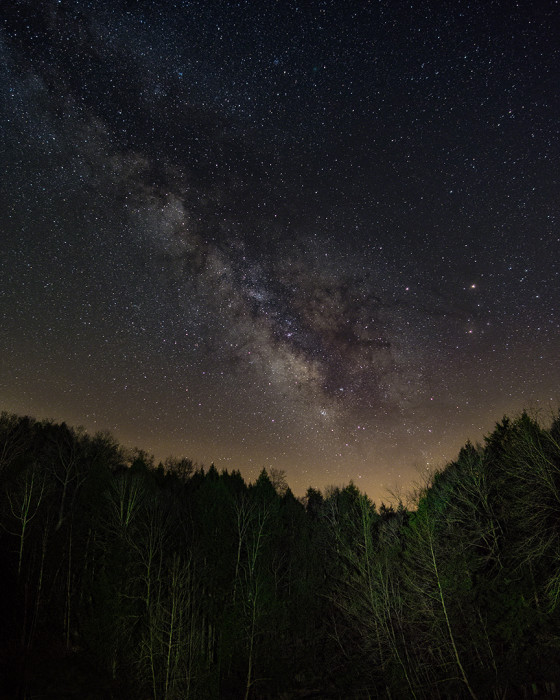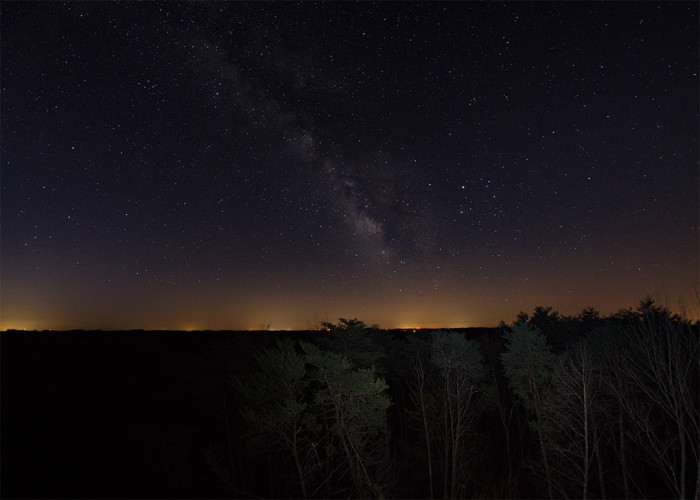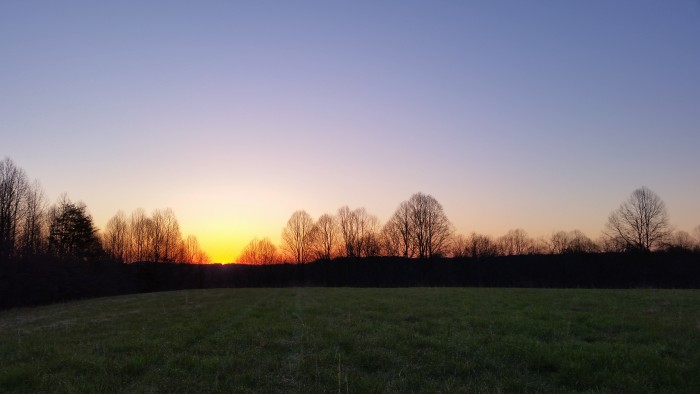For the past three days there’s been a rare confluence of weather and moon that’s allowed those of us interested in astrophotography, and willing to get up at inhumane hours, a chance to capture some nice Milky Way shots. I took advantage and went to Hocking Hills twice to try a new technique, try a new location and find yet another new location to try next time the moon and weather coordinate.
In landscape photography having an attention grabbing foreground element helps draw your viewers into your photo. It’s the same with landscape astrophotography. Yes, the stars are the, uh, stars of the photos, but giving the viewer context and contrast will make Milky Way photos more immersive.
Click images to enlarge.
All photos are copyrighted and protected by Digimarc.

ISO:6400 – f/2.8 – 8mm – 30 sec
New Technique: I’ve mostly let foregrounds go to silhouettes in my shots of the Milky Way. It’s a common approach and it could be argued that it’s true to how you see the scene standing there in the dark. On my last couple astrophotography shoots I’ve experimented with adding light painting to illuminate the foreground. I’m also toning down the post processing in the hope of producing a more natural looking if not naturally occurring photo.

ISO:1600 – f/2 – 12mm – 15 sec
For the image above I took some test shots to get the Milky Way exposure correct then set the shutter on a 10 second delay and walked several paces away from the camera. When the shutter clicked, I painted the trees with a variable focus Feit 1000 lumen LED flashlight. At full power the flashlight is way to bright for light painting. In some of the test shots it caused a glare on the trees and lit up the humidity in the air like a search light. Even at its lowest setting and widest beam, I only had to play it over the closest trees for a couple seconds and maybe three or four seconds over the further ones. In short, the most powerful light you can buy is not necessarily the best. To me, illuminating the foreground is an improvement.
A couple days later I checked out Ash Cave Fire Tower. You can climb the stairs to just under the cab, but cannot go in. There are small triangular landings after every flight of stairs. I setup on the highest south facing landing. It’s a tiny space and getting setup with just a red headlamp required some care. I really didn’t want to drop anything. Conditions were good, but not great. There’s a fair amount of light pollution to the south and the moon set less than hour before dawn started to dim the stars. I did manage to get a couple shots, including this one with a little light painting of the trees. Next time I want to try a vertical panorama to show off the fact that the photo is being taken from the tree tops.

ISO:800 – f/2.8 – 8mm – 30 sec
After sunrise I went to see if I could get some shots of Cedar Falls before the weekend crowds descended. I parked at the small lot on 374. Looking East towards the sunrise, I could see the top of the hill across the road looked cleared of trees. I grabbed my gear and headed across the road. There’s a dirt road that goes part way up the hill and then a trail that continues to the top. It’s a steep climb, but this will be a fantastic spot for sunrises and astrophotography. I’m eager to go back when conditions are right in a couple weeks.

Shot with Samsung S5